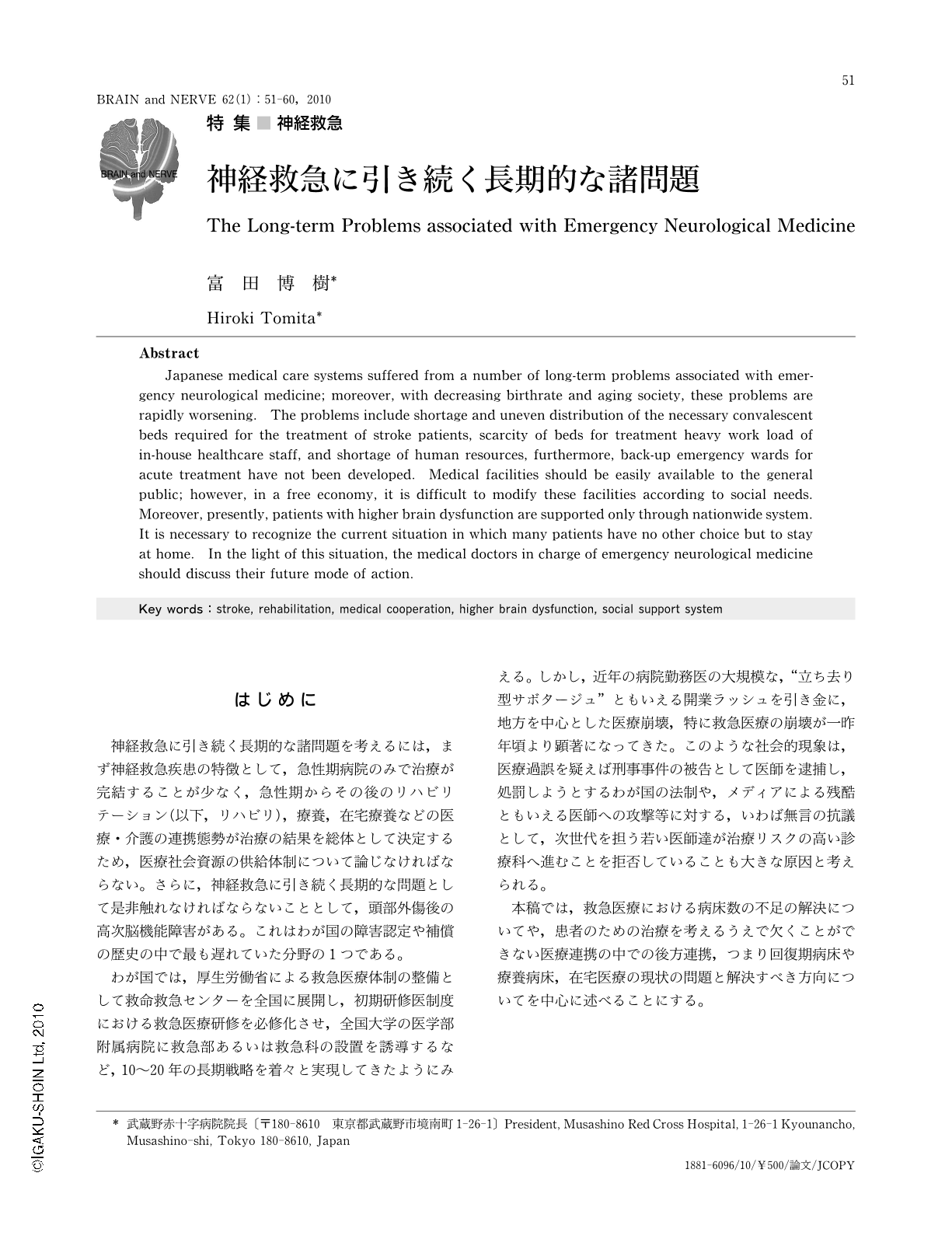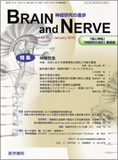Japanese
English
- 有料閲覧
- Abstract 文献概要
- 1ページ目 Look Inside
- 参考文献 Reference
はじめに
神経救急に引き続く長期的な諸問題を考えるには,まず神経救急疾患の特徴として,急性期病院のみで治療が完結することが少なく,急性期からその後のリハビリテーション(以下,リハビリ),療養,在宅療養などの医療・介護の連携態勢が治療の結果を総体として決定するため,医療社会資源の供給体制について論じなければならない。さらに,神経救急に引き続く長期的な問題として是非触れなければならないこととして,頭部外傷後の高次脳機能障害がある。これはわが国の障害認定や補償の歴史の中で最も遅れていた分野の1つである。
わが国では,厚生労働省による救急医療体制の整備として救命救急センターを全国に展開し,初期研修医制度における救急医療研修を必修化させ,全国大学の医学部附属病院に救急部あるいは救急科の設置を誘導するなど,10~20年の長期戦略を着々と実現してきたようにみえる。しかし,近年の病院勤務医の大規模な,“立ち去り型サボタージュ”ともいえる開業ラッシュを引き金に,地方を中心とした医療崩壊,特に救急医療の崩壊が一昨年頃より顕著になってきた。このような社会的現象は,医療過誤を疑えば刑事事件の被告として医師を逮捕し,処罰しようとするわが国の法制や,メディアによる残酷ともいえる医師への攻撃等に対する,いわば無言の抗議として,次世代を担う若い医師達が治療リスクの高い診療科へ進むことを拒否していることも大きな原因と考えられる。
本稿では,救急医療における病床数の不足の解決についてや,患者のための治療を考えるうえで欠くことができない医療連携の中での後方連携,つまり回復期病床や療養病床,在宅医療の現状の問題と解決すべき方向についてを中心に述べることにする。
Abstract
Japanese medical care systems suffered from a number of long-term problems associated with emergency neurological medicine; moreover,with decreasing birthrate and aging society,these problems are rapidly worsening. The problems include shortage and uneven distribution of the necessary convalescent beds required for the treatment of stroke patients,scarcity of beds for treatment heavy work load of in-house healthcare staff,and shortage of human resources,furthermore,back-up emergency wards for acute treatment have not been developed. Medical facilities should be easily available to the general public; however,in a free economy,it is difficult to modify these facilities according to social needs. Moreover,presently,patients with higher brain dysfunction are supported only through nationwide system. It is necessary to recognize the current situation in which many patients have no other choice but to stay at home. In the light of this situation,the medical doctors in charge of emergency neurological medicine should discuss their future mode of action.

Copyright © 2010, Igaku-Shoin Ltd. All rights reserved.


